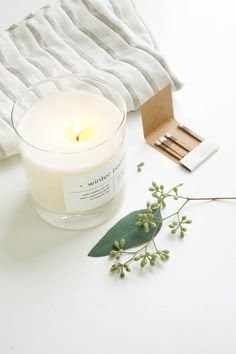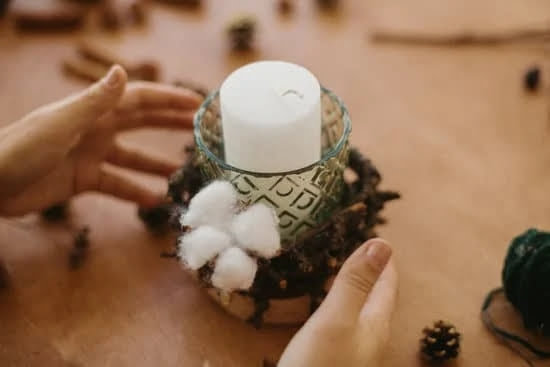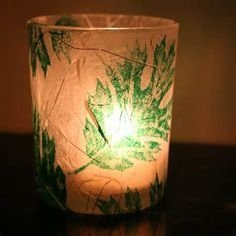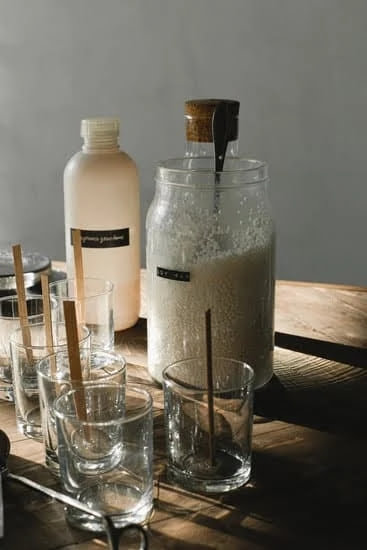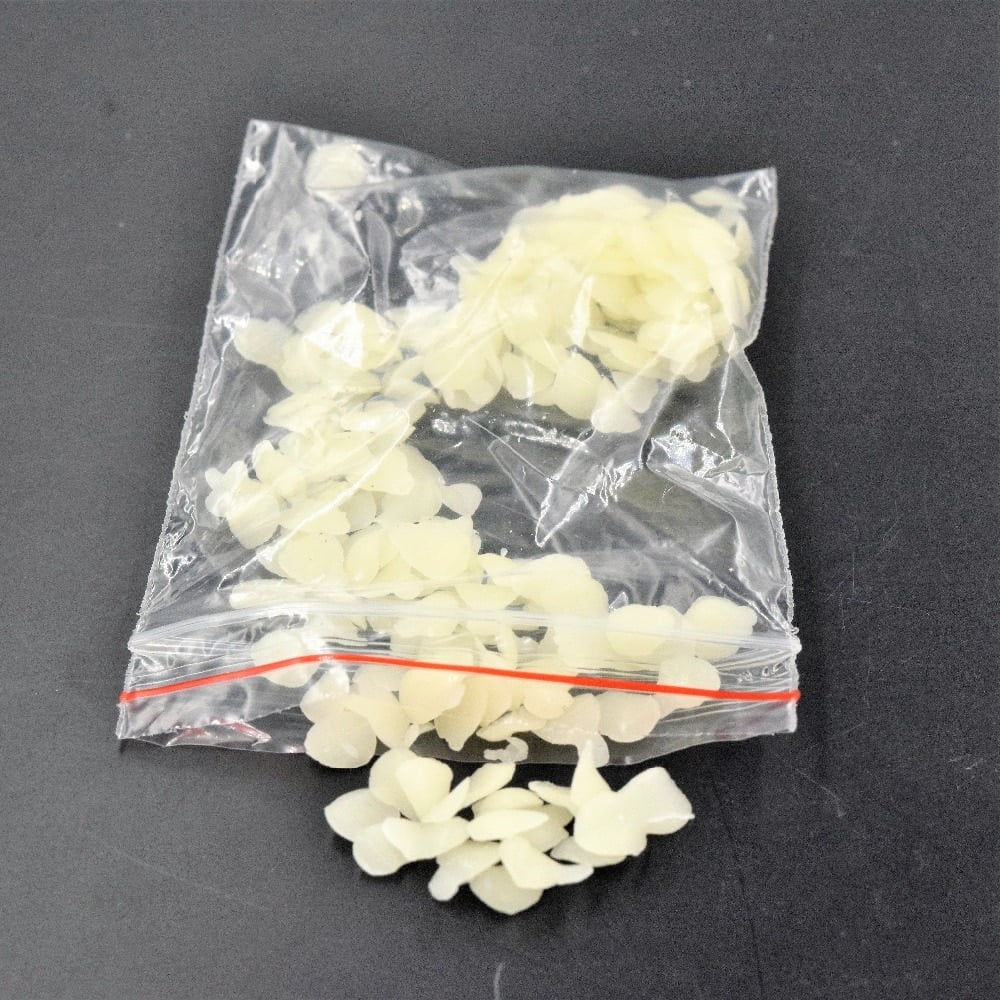When it comes to candle making, the possibilities are endless. From experimenting with different waxes and dyes to crafting unique scents, candle making allows for a creative and customizable experience. One often overlooked ingredient that can add a delightful aroma to candles is vanilla extract. But can you really use vanilla extract in candle making? In this article, we will explore the world of candle making and delve into the potential use of vanilla extract as a scent option.
Candle making has become a popular hobby and even a small business venture for many individuals. With a wide range of available supplies and tools, enthusiasts can create candles that not only illuminate a space but also fill it with captivating fragrances. Vanilla extract, known for its warm and inviting aroma, has caught the attention of candle makers as a possible scent option.
Before considering vanilla extract as an ingredient in your candle-making process, it’s crucial to understand the science behind this commonly used flavoring agent. Obtained from the beans of the vanilla orchid, vanilla extract contains various compounds such as vanillin, which gives it its distinct sweet smell.
However, when introduced to heat or other ingredients commonly found in candle-making processes, these compounds may react differently than they would in baking or cooking scenarios. Therefore, understanding the composition of vanilla extract is essential when evaluating its potential impact on your candle-making endeavors.
In this article, we will guide you through the factors to consider before using vanilla extract in your candles, including its scent retention capabilities and any potential reactions it may have with other ingredients. We will also examine both the advantages and disadvantages of incorporating vanilla extract into your candle-making process so that you can make an informed decision about whether or not to give it a try.
Additionally, we will explore alternative options such as fragrance oils or essential oils and compare their effectiveness in achieving desired scents in candles.
Whether you’re an experienced candle maker looking for new ideas or someone just starting out in this creative craft, this article will provide valuable insights into the use of vanilla extract in candle making. So, let’s dive into the possibilities and discover if vanilla extract is a compatible ingredient for creating beautiful and fragrant candles.
The Science Behind Vanilla Extract
Vanilla extract is a popular ingredient in baking and cooking, known for its rich and sweet aroma. However, when it comes to candle making, it’s important to understand the science behind vanilla extract and how it can potentially impact the final product.
Vanilla extract is derived from the vanilla bean, which contains various compounds that contribute to its distinct flavor and scent. The main component of vanilla extract is vanillin, which gives it its characteristic sweet and creamy aroma. In addition to vanillin, vanilla extract also contains other volatile aromatic compounds such as coumarin and eugenol.
When used in candle making, these aromatic compounds can add a unique and inviting fragrance to your candles. However, it’s important to note that the scent retention of vanilla extract may not be as strong as synthetic fragrance oils specifically designed for candle making. This means that while your candles may initially have a lovely vanilla scent, it may not last as long or be as potent compared to using dedicated fragrance oils.
Another factor to consider when using vanilla extract in candle making is its potential reaction with other ingredients. The alcohol content in vanilla extract can affect the way the wax performs during the burning process. It may cause the wax to burn faster or produce more soot than without the addition of vanilla extract.
To mitigate these potential issues, there are several factors you should consider before incorporating vanilla extract into your candles. These include:
- Experiment with different ratios: Finding the right amount of vanilla extract to use in your candles is crucial for achieving a balanced scent without compromising burn performance.
- Use quality ingredients: Opt for high-quality pure vanilla extract rather than imitation ones which contain synthetic additives that may affect your candles’ quality.
- Test compatibility: Conduct small test batches first to ensure that the addition of vanilla extract doesn’t negatively interact with your chosen waxes or other additives.
- Explore alternatives: If you’re not satisfied with the performance of vanilla extract, consider using fragrance oils or essential oils specifically formulated for candle making.
By understanding the science behind vanilla extract and considering these factors, you can make an informed decision on whether or not to use it in your candle making process. While vanilla extract can add a delightful aroma to your candles, it’s important to weigh the pros and cons and explore alternative options to achieve the desired results.
Factors to Consider
When considering the use of vanilla extract in candle making, there are several important factors to take into account. Two key considerations are scent retention and potential reactions with other ingredients.
Scent retention is a crucial aspect of candle making, as it determines how long the aroma will last when the candle is lit. Vanilla extract, while having a delightful fragrance, may not provide the same level of scent retention as other options like fragrance oils or essential oils specifically designed for candle making.
This is because vanilla extract contains a high percentage of volatile compounds that can evaporate quickly when exposed to heat. It is important to keep this in mind if long-lasting scent is a priority for your candles.
Another factor to consider before using vanilla extract in candle making is its compatibility with other ingredients. Some materials used in candle making, such as certain waxes or dyes, may react with vanilla extract and result in discoloration or other undesired effects. It is recommended to conduct a small test batch first by blending a small amount of vanilla extract with your chosen wax and dye to see if any adverse reactions occur before proceeding with larger-scale production.
- Ensure proper ventilation when working with vanilla extract due to its strong odor.
- Consider using vanilla fragrance oils or essential oils specifically made for candle making for better scent retention.
- Conduct a test batch by mixing a small amount of vanilla extract with your chosen wax and dye to check for any adverse reactions.
Taking these factors into consideration will help you make an informed decision about incorporating vanilla extract into your candle making process. While it may add a wonderful scent to your candles, it is crucial to weigh the potential drawbacks against the desired outcome to ensure the best possible end result.
Overall, while using vanilla extract can be a viable option for adding fragrance to your candles, it is important to carefully evaluate the specific needs and goals of your project and consider alternative options like fragrance oils or essential oils if scent retention or compatibility with other ingredients are a concern.
The Pros and Cons of Using Vanilla Extract
Vanilla extract is a popular ingredient in many culinary creations, but can it be used effectively in candle making? In this section, we will examine the pros and cons of incorporating vanilla extract into your candle making process.
One of the biggest advantages of using vanilla extract in candles is the delightful aroma it provides. Vanilla has a warm and comforting scent that is beloved by many, making it a popular choice for candles. The sweet and creamy fragrance of vanilla can create a cozy atmosphere, perfect for relaxation or setting the mood in any space.
Another advantage of using vanilla extract in candle making is its natural and organic properties. Many commercially available fragrance oils contain synthetic ingredients that may not be ideal for those seeking more natural options. Vanilla extract offers an alternative with its authentic and organic composition.
However, there are some disadvantages to consider when using vanilla extract in candle making. One significant drawback is its potential impact on scent retention. Compared to fragrance oils specifically formulated for candle making, vanilla extract may have a weaker scent throw, meaning it may not disperse as strongly or evenly throughout the room when burned.
Furthermore, some candle makers have reported potential reactions when adding vanilla extract to their wax. These reactions could range from discoloration or texture changes to reduced burn time or even potential safety hazards. It is important to carefully research and test compatibility before incorporating vanilla extract into your candles.
Before deciding whether or not to use vanilla extract in your candle making process, it is crucial to consider these pros and cons carefully. While the enticing aroma and natural appeal of vanilla make it an appealing choice for many, it’s also essential to evaluate factors such as scent retention and potential reactions with other ingredients. By weighing these considerations, you can determine if vanilla extract aligns with your desired outcomes in candle making.
| Advantages | Disadvantages |
|---|---|
| – Delightful aroma | – Potential impact on scent retention |
| – Natural and organic properties | – Possible reactions with other ingredients |
DIY Vanilla Extract
Making your own vanilla extract for candle making purposes can be a fun and rewarding experience. Not only does it allow you to have control over the ingredients that go into your candles, but it also gives you the opportunity to customize the scent according to your preferences. Here is a step-by-step guide on how to make DIY vanilla extract for candle making.
- Gather Your Ingredients: To make DIY vanilla extract, you will need high-quality vanilla beans and a carrier liquid such as alcohol or vegetable glycerin. For candle making purposes, it is recommended to use high-proof alcohol like vodka, as it will evaporate during the curing process and leave behind the concentrated vanilla scent.
- Prepare Your Vanilla Beans: Take 3-4 whole vanilla beans and slice them lengthwise down the center. This allows the flavors and aromas to be released more easily during extraction. You can also cut the beans into smaller pieces if desired.
- Combine Vanilla Beans and Alcohol: Place the sliced vanilla beans in a glass jar or bottle with an airtight lid. Pour enough vodka over the beans to completely cover them. Seal the container tightly.
- Store and Shake: Find a cool, dark place to store your vanilla bean mixture such as a cupboard or pantry. Give the jar a good shake every few days for at least six weeks, allowing time for the flavors to infuse into the alcohol.
- Strain and Bottle: After six weeks of steeping, strain out the vanilla bean particles using cheesecloth or a fine-mesh sieve into another clean glass jar or bottle. Pressing gently on the beans will help release any remaining liquid trapped within them.
- Label and Date: Remember to label your homemade vanilla extract with its creation date so that you know when it will reach peak flavor potency.
Once your DIY vanilla extract is ready, you can incorporate it into your candle making process according to your desired scent strength. Start with a small amount and gradually increase until you achieve the desired level of fragrance. Remember to consider the type of wax, wick, and other ingredients you are using as they may affect how the vanilla extract interacts with your candle. Enjoy the process of experimenting and creating unique scented candles using your homemade vanilla extract.
Alternative Options
One of the factors to consider before using vanilla extract in candle making is the availability and effectiveness of alternative options. Fragrance oils and essential oils are popular alternatives that can be used to achieve a similar scent in candles.
Fragrance oils are synthetic substances that are specifically formulated for use in candles. They come in a wide variety of scents, including vanilla, and are known for their strong and long-lasting fragrance. Fragrance oils offer consistency in scent, allowing candle makers to easily replicate their desired aroma. Another advantage of fragrance oils is that they have a higher flash point than essential oils, which means they can withstand higher temperatures during the candle-making process without losing their scent.
On the other hand, essential oils are natural plant extracts that retain the aromatic compounds of plants. They offer a more subtle and authentic scent compared to fragrance oils, as they capture the true essence of the plant from which they are derived.
Essential oils also have therapeutic properties, adding potential benefits beyond just fragrance. However, it is important to note that not all essential oils are suitable for candle making due to their low flash points, which may result in scent evaporation or even combustion when exposed to high temperatures.
To compare the effectiveness of these alternative options, it is crucial to consider factors such as scent retention, intensity, and compatibility with other ingredients. Fragrance oils generally have better scent retention and longevity compared to essential oils. They also tend to provide a stronger and more noticeable scent throw when candles are burning. Essential oils, on the other hand, may require higher concentrations or blending different scents together to achieve a similar level of intensity.
| Alternative Options | Advantages | Disadvantages |
|---|---|---|
| Fragrance Oils | – Wide variety of scents available
| – Synthetic substance
|
| Essential Oils | – Natural plant extracts with authentic scents
| – Low flash point, may evaporate or combust at high temperatures
|
Best Practices and Tips
Recommended Dosage
When using vanilla extract in candle making, it is important to determine the appropriate dosage for achieving the desired scent. The recommended dosage of vanilla extract typically ranges from 1% to 6% of the total weight of wax used in the candle.
However, it’s important to note that using a higher dosage may result in a stronger scent but could also impact the performance of the candle, such as decreasing burn time or causing excessive sooting. It is recommended to start with a lower percentage and gradually increase until the desired fragrance intensity is achieved.
Mixing Techniques
To ensure an even distribution of vanilla extract throughout the wax, proper mixing techniques are essential. Before adding vanilla extract, melt your wax completely and allow it to cool slightly, but not solidify. This ensures that the vanilla extract mixes evenly with the wax without settling at the bottom or creating clumps.
Gently stir in the vanilla extract using a heat-resistant spatula or spoon until fully incorporated into the wax. Avoid vigorous stirring, as this can introduce air bubbles into the mixture which may affect candle performance.
Proper Storage
To preserve the quality and potency of your vanilla extract for future use, proper storage is crucial. Vanilla extract should be stored in a cool, dark place away from direct sunlight and extreme temperature fluctuations. Opt for an airtight container to prevent evaporation and exposure to moisture. Additionally, labeling your container with the date of creation can help you keep track of freshness and ensure you rotate your supply accordingly.
It is worth noting that using high-quality vanilla extract in your candles can yield superior results compared to lower quality alternatives. Look for pure vanilla extract without any additives or artificial flavors for optimal fragrance performance. By following these best practices and tips, you can enhance your candle making experience by incorporating vanilla extract effectively while ensuring longevity and consistent quality in your finished products.
Real-life Experiences
Interview with Candle Maker Sarah Thompson
I had the opportunity to speak with Sarah Thompson, a seasoned candle maker who has successfully incorporated vanilla extract into her candles. According to Sarah, using vanilla extract adds a warm and inviting scent that enhances the overall aroma of the candle. She mentioned that her customers particularly love the comforting and cozy atmosphere created by the vanilla-scented candles.
Sarah shared her experience with vanilla extract and explained that she prefers using pure vanilla extract rather than synthetic alternatives. She mentioned that while synthetic fragrances may offer a stronger scent throw, they lack the depth and complexity of natural ingredients like vanilla extract. According to Sarah, pure vanilla extract provides a more authentic and nuanced fragrance in candles.
Testimonial from Candle Maker John Davis
“I have been making candles for years, and incorporating vanilla extract has definitely been a game-changer for me,” says John Davis, an experienced candle maker. “The sweet and soothing aroma of vanilla adds an extra layer of elegance to my candles that my customers really appreciate.”.
John went on to share his experimentation with different types of candles and how using vanilla extract produced varying results. He found that soy wax was particularly receptive to the addition of vanilla extract, resulting in a long-lasting scent that filled the room. However, he advised caution when using vanilla extract in beeswax candles as it can diminish their natural fragrance.
The interviews with Sarah Thompson and John Davis provide valuable insights into the use of vanilla extract in candle making. Their experiences demonstrate that incorporating this ingredient can result in unique and enticing scents that enhance the overall quality of handmade candles. However, it is important for each candle maker to experiment with different ratios of vanilla extract and other ingredients to achieve desired results.
Furthermore, it is worth noting that using natural vanilla extract may come with a higher price tag compared to synthetic fragrance oils or essential oils. Additionally, candle makers must also consider the potential interactions of vanilla extract with other ingredients in their specific recipe.
Overall, while there is some experimentation and careful consideration required, the experiences shared by these candle makers indicate that vanilla extract can be a valuable addition to the candle making process, offering unique scents and an elevated sensory experience for candle enthusiasts.
Final Thoughts
In conclusion, after exploring the world of candle making and the potential use of vanilla extract, it is clear that there are several factors to consider before incorporating it into your candle making process.
The science behind vanilla extract reveals that its composition can have both positive and negative impacts on candle making. While the warm and inviting scent of vanilla can add a delightful aroma to your candles, the high water content in vanilla extract may affect the performance and longevity of the candle.
When considering whether or not to use vanilla extract in candle making, it is important to weigh the pros and cons. On one hand, using vanilla extract can provide a natural and organic fragrance option. On the other hand, it may result in scent retention issues and potential reactions with other ingredients.
Alternatives to vanilla extract, such as fragrance oils or essential oils, can be considered as well. These options offer more control over scent intensity and better compatibility with candle-making ingredients.
Frequently Asked Questions
Can you put vanilla extract into a candle?
Yes, it is possible to put vanilla extract into a candle. Vanilla extract contains alcohol and a concentrated form of vanilla flavoring extracted from vanilla beans.
Adding a few drops of vanilla extract to melted wax or incorporating it into the candle making process can infuse the candle with a pleasant vanilla scent when it is burned. However, it’s important to use caution and not add excessive amounts of liquid as it may affect the quality and performance of the candle.
Can you mix vanilla extract with wax?
While it is technically feasible to mix vanilla extract with wax, there are certain factors to consider. As mentioned earlier, vanilla extract contains alcohol which can potentially impact the consistency and burning properties of the wax if added in large quantities.
When mixing an alcohol-based liquid like vanilla extract with melted wax, it can cause problems such as uneven burning, poor scent throw, or even damage to the wick. Therefore, if you choose to mix vanilla extract with wax, it’s advisable to do so in moderation and experiment with small batches before committing to larger projects.
Can you use vanilla extract for scent?
Vanilla extract can undoubtedly be used for scent purposes due to its rich and familiar aroma. Whether incorporated into homemade candles, diffusers, room sprays, or other scented products, adding a couple of drops of vanilla extract can impart a delightful fragrance reminiscent of freshly baked goods or sweet treats.
That being said, since vanilla extract typically contains alcohol alongside its fragrance compounds, some individuals may find that using specialized fragrance oils specifically designed for candle-making or aromatherapy yield more consistent results compared to using pantry staples like vanilla extract alone.

Welcome to my candle making blog! In this blog, I will be sharing my tips and tricks for making candles. I will also be sharing some of my favorite recipes.

